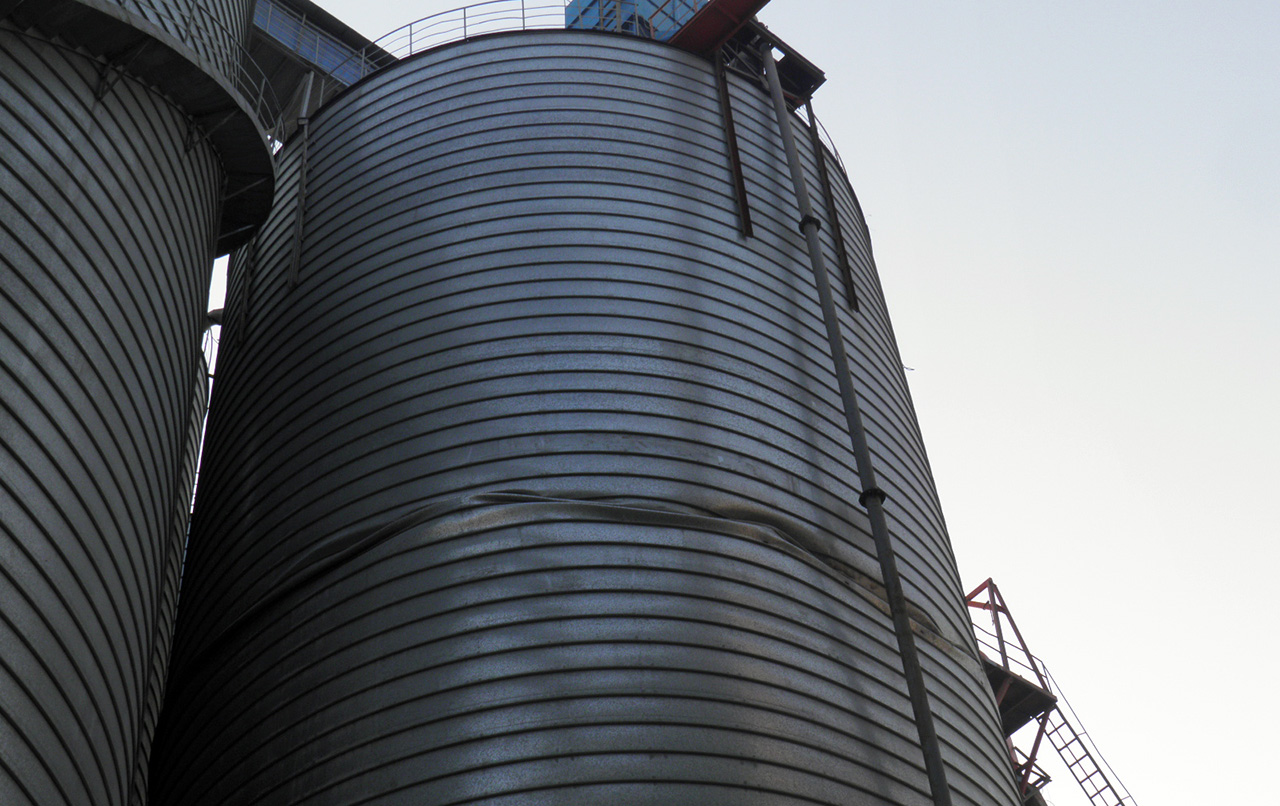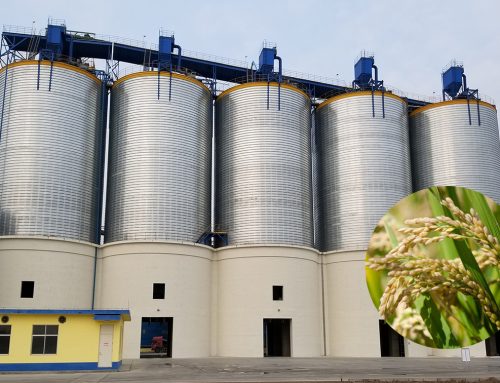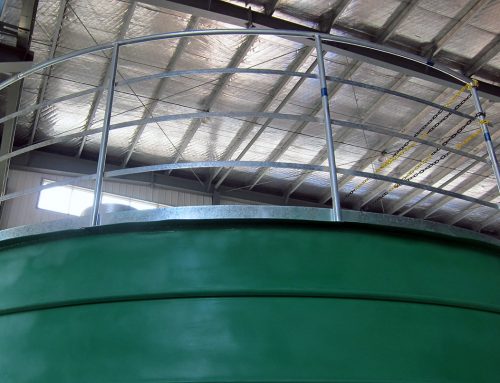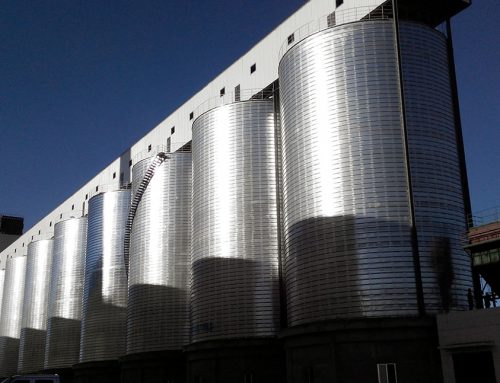Spiral steel silos are widely used in human society. We can find them in farms, mining process, bulk handling systems and many other places. However, the number of accidents caused by the collapse of steel silos also increases.
The safety of steel silos is affected by many aspects. In the design process, the accuracy of engineer’s calculation is very important for the safety of steel silo. In the construction process, it is the accuracy of workers’ operation that affects its safety. Next, we will perform buckling analysis on the design of the spiral steel silo.
Buckling analysis is mainly used to study the stability of structures under certain loads and to determine the critical loads that cause structural instability. According to the relevant records of the collapse accidents of steel silos around the world, many accidents are caused by the instability of steel silos.
Most accidents occur in the discharge process. The typical phenomenon is that the steel silo has local uplift and bending, which leads to the inclination of the silo. Some accidents are caused by wind loads and other factors. They caused huge economic losses and casualties. Therefore, the stability of steel silos has become more and more important, which has attracted the attention of scholars all over the world.
Analysis of Steel Silo Instability
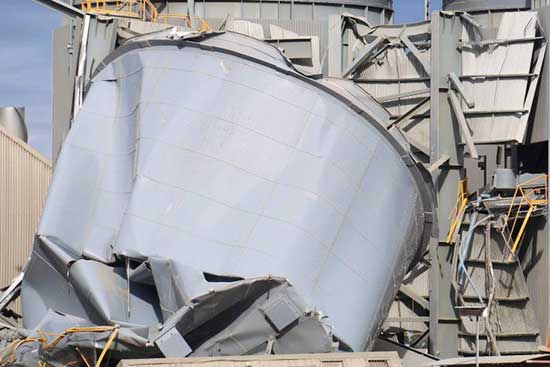
In the structure of spiral steel silo, the silo body is a cylindrical shell under axial load. Its instability is characterized by the bulge, inclination and collapse of the local part of the silo wall.
The main causes of silo inclination and collapse are as follows:
The eccentric loading and unloading, they can bring uneven lateral horizontal pressure. Or because of center feeding, which will lead the rest of the material forming a horseshoe-shape block due to limits of free flow. And then, the circumferential pressure is not uniform, which is the lateral interference force (Including wind load). Then, when the vertical force reaches the critical point, the steel silo will lose stability.
The horizontal dynamic load side pressure increases as the unloading results in the increase of the vertical friction force of the material on the wall, that is, the vertical pressure on the wall of the silo is increased, and then the instability factors of the steel silo are intensified.
The material forms the bridge on the unloading hole, and between the bridge and the unloading hole here will form local empty areas of unloading which will cause the formation of decompression area inside the silo. Meanwhile, at the bridging moment the area may still be in the state of material flow. This situation may bring about lateral horizontal pressure or other factors that result in lateral disturbance force. At the time, the silo wall pressure is suddenly increased, especially under the interactions of the bridging formation and collapse. This lateral horizontal pressure of the silo wall increases suddenly, which generally exacerbate the instability of the silo.
How to Deal with Silo Instability
Fully calculate the load capacity of the steel silo and its foundation.
Fully check the bearing capacity and soil density of construction site of the steel silo in order to get a reliable and practical foundation.
Set up settlement observation area to make the above calculation and check work well. At the same time, get the difference between steel silo load and the bearing capacity of the foundation through the calculation.
The level of the foundation settlement of steel silo must be equal to the height of the settlement area under the silo. Otherwise, the silo cannot be evenly sunk.
After calculating the difference between the heavy load of steel silo and the bearing capacity of the foundation, according to the allowable value of the compression modulus of the foundation, through the increase of the soil density of the foundation soil, we can finish the bearing capacity of the steel silo that is needed.
Spiral steel silo belongs to thin cylindrical shell under axial friction load and radial horizontal load. The instability of the silo can be attributed to the crowning in the some parts of the silo wall. That is to say, steel silo buckling may bring about a ripple in the height direction of the silo wall, similar to the sine curve, and then the ripples may be different in the number in the circumferential direction of steel silo wall. With the further development, this will cause the tilt and collapse of steel silo body, so it belongs to longitudinal instability.
The instability of spiral steel silo is most likely to occur in the unloading process. In the process vertical pressure aroused by material friction in the silo wall will cause the structure damage of the steel silo, which is the most common form, namely buckling of cylindrical shells under axial compression. In the calculation of the critical load, considering the adverse effects of various factors and the good effects of the internal pressure, we should value the critical stress formula under the interaction of vertical stress and horizontal pressure on the silo wall. From the results of buckling analysis, due to its unique structure, its buckling form is a sinusoidal characteristic of deformation curve along the height direction. At the same time, around the silo wall the ripples are with different numbers. This situation is caused by the dynamic flow of stored material. Although it is rarely used to control the buckling analysis of the steel silo in the engineering design at present, we should strengthen the bending stiffness of the column and the thickness of the wall in order to prevent the buckling instability and failure of steel silo.
The detailed design at the early period can effectively protect the lifespan of the silo. The steel silo Flyer Company designed and manufactured creates quality with real strength to win customers. Please feel free to contact us for any information you want to know.

